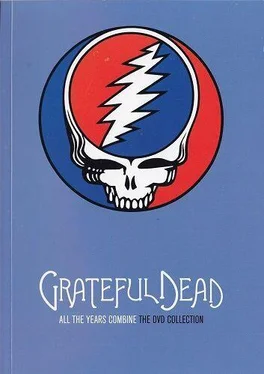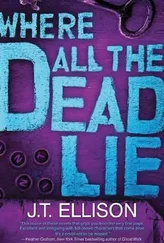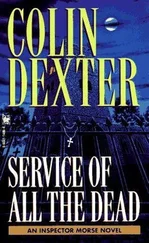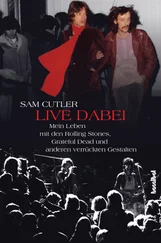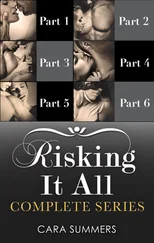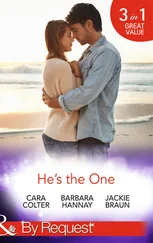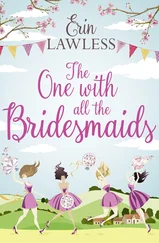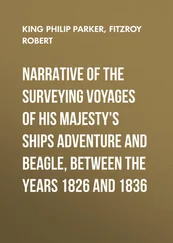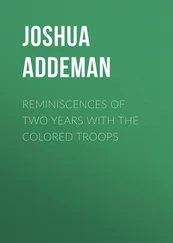Blair Jackson - It's a rainbow full of sound… Grateful Dead - All the years combine
Здесь есть возможность читать онлайн «Blair Jackson - It's a rainbow full of sound… Grateful Dead - All the years combine» весь текст электронной книги совершенно бесплатно (целиком полную версию без сокращений). В некоторых случаях можно слушать аудио, скачать через торрент в формате fb2 и присутствует краткое содержание. Жанр: Биографии и Мемуары, на английском языке. Описание произведения, (предисловие) а так же отзывы посетителей доступны на портале библиотеки ЛибКат.
- Название:It's a rainbow full of sound… Grateful Dead: All the years combine
- Автор:
- Жанр:
- Год:неизвестен
- ISBN:нет данных
- Рейтинг книги:3 / 5. Голосов: 1
-
Избранное:Добавить в избранное
- Отзывы:
-
Ваша оценка:
- 60
- 1
- 2
- 3
- 4
- 5
It's a rainbow full of sound… Grateful Dead: All the years combine: краткое содержание, описание и аннотация
Предлагаем к чтению аннотацию, описание, краткое содержание или предисловие (зависит от того, что написал сам автор книги «It's a rainbow full of sound… Grateful Dead: All the years combine»). Если вы не нашли необходимую информацию о книге — напишите в комментариях, мы постараемся отыскать её.
It's a rainbow full of sound… Grateful Dead: All the years combine — читать онлайн бесплатно полную книгу (весь текст) целиком
Ниже представлен текст книги, разбитый по страницам. Система сохранения места последней прочитанной страницы, позволяет с удобством читать онлайн бесплатно книгу «It's a rainbow full of sound… Grateful Dead: All the years combine», без необходимости каждый раз заново искать на чём Вы остановились. Поставьте закладку, и сможете в любой момент перейти на страницу, на которой закончили чтение.
Интервал:
Закладка:
Blair Jackson
It's a rainbow full of sound…
Grateful Dead: All the years combine

The Grateful Dead was the most recorded band in history. Their legendary tape vault contains thousands of master audio tapes of performances dating back to 1966, from stereo reel-to-reels to cassettes to two-inch multitracks. But film and video? Not so much, really, until the late 1980s.
Why? Well, there are several reasons. Audio recordings were easy to manage, even in the days of stereo reels. Owsley "Bear" Stanley, who became the group's first dedicated soundman (not to mention the San Francisco scene's leading LSD maker and advocate), believed that the musicians could learn something from listening to recordings of their performances and rehearsals, and though they were not scrupulous about it their first couple of years, eventually taping shows became an important part of their routine. The result is a deep vault that is the envy of bands from that era who didn't have the same foresight as the Dead — in other words, everybody else!
But in the late '60s and early '70s, video cameras were expensive and cumbersome and required a whole crew to operate (not to mention a command center with monitors and switching equipment and such) at a time when the band wasn't making very much money. Appearing on TV wasn't really an option, either — there was barely any rock'n'roll on television in the late '60s except short guest spots on programs like The Ed Sullivan Show, Shindig! or The Smothers Brothers Comedy Hour , none of which were clamoring for the decidedly underground Grateful Dead.

There were a couple of odd appearances by the band here and there — like the time in 1969 when the group turned up on Hugh Hefner's Playboy After Dark TV show, shot on a soundstage in L.A. decorated to look like a swinging bachelor pad and populated by buxom young women and well-manicured young men. Someone in the Dead's traveling party spiked some of the beverages being consumed offstage with acid, leading to probably the loosest and craziest episode of that show ever aired.
But the Grateful Dead, and Jerry Garcia in particular, felt that TV was too limiting a medium for a band that was all about expansive playing and musical exploration on their own terms. As Garcia told me in the summer of 1987, right as the Dead were ascending to their greatest commercial peak behind the success of "Touch Of Grey" and their In The Dark album: "I just have no stomach for playing on television — it's just the wrong form for the Grateful Dead. I mean, it's about time for us to tune up. Also, television is kind of reductive; the band playing on television seems reduced. It doesn't come through."
Nevertheless, the Dead did consent to be taped in early 1970 — along with Jefferson Airplane and Santana — for a commercial-free hour-long Public Television special called A Night At The Family Dog (which included nice segments of each group playing, plus a "super jam" featuring members of all three). And later that year, San Francisco Public TV affiliate KQED televised a live concert from San Francisco's Winterland (simulcast over KQED-FM and free-form rock radio pioneer KSAN) featuring the Dead, the Airplane, Quicksilver and Hot Tuna. Alas, no video from that event has ever surfaced; it's lost to the ages.
In the spring of 1972 the Dead appeared twice on European TV during the group's storied first overseas tour — in Copenhagen, Denmark, and in Bremen, Germany — but neither of those performances have been released commercially yet. Then, in the summer of '72, the Dead agreed to be filmed by a camera crew at a show they played in rural Oregon in 100-degree heat. That legendary LSD-drenched show was the basis for a film called Sunshine Daydream , which has been heavily bootlegged through the years, but not formally released either.
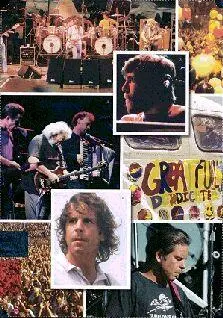
A year later, in the fall of 1973, the Grateful Dead were approached about inaugurating a new syndicated late-night TV series called Don Kirshner's Rock Concert , but as former manager Jon McIntire explained recently: "Because we didn't have singles, and because our songs were long, exposure on commercial television was not really available to us. But it also had to do with the band's philosophy, which mostly came from Jerry, who really didn't want the music broken up with commercial breaks. Like the most [time] you have is 11 minutes between commercials. So every time there was an objection, I'd get [the producers of Rock Concert ] to make a concession. I got the unions to make a concession — in those days they wouldn't allow a band to mix their own music. I got them to change that. I got them to agree to let us do it by saying, 'You know, if you make a mistake, you're going to cause bleeding eardrums in the first 20 rows of people. Are you willing to take that on? No.' I also got them to shift around the commercial break so we'd have more time. But what Jerry's objection finally boiled down to was having the music presented ensconced in all those commercials. He felt that was not the way to see the Grateful Dead. It wasn't consistent with who we were. I agree with him now, but at the time it was totally frustrating to me because I thought, 'You guys want to be exposed to more people, but you don't know how to do it!'" (The band also rejected a more intriguing offer — to tape a series of TV specials of the Dead playing at sacred spots around the globe, from Stonehenge to Easter Island. "They turned it down," McIntire said with a laugh. "They just didn't want television.")
So that brings us up to 1974 and The Grateful Dead Movie, which is where this DVD collection begins chronologically. The group decided in the summer of '74 that they wanted to take a break. They'd been playing steadily since 1965, slowly but surely becoming more popular, but by 1974 their touring operation had spiraled out of control, thanks in part to their investment in and development of the largest PA system ever assembled by a band — the justly famous and awe-inspiring Wall of Sound. It sounded fantastic, but it was a bear to haul around, set up and tear down, and also a serious financial drain. Something had to give — so how 'bout a hiatus? Get away from the road grind, recharge the batteries, work on solo projects close to home. With little warning, the band scheduled a series of five farewell-for-now concerts at Winterland for mid-October '74 and hired a film crew of nine, coordinated by director Leon Gast, to capture the shows — both onstage and all around the decrepit but charming venue, inside and out.
Garcia had long harbored a desire to get involved with filmmaking, so this project provided the perfect opportunity for him to dive into that world. And The Grateful Dead Movie (technically just titled The Grateful Dead ) is truly Garcia's film, even though there was invaluable input from a cadre of film editors (led by Susan Crutcher) and many others. The film team and Garcia spent more than two-and-a-half years, on and off, putting the film together, assembling a work that in the end was a superb concert movie, a mind-bending and adventurous experimental film, and an incredibly perceptive and hip portrait of the Dead Head fan base and their unique relationship to this "band beyond description." Has there ever been a film with more ecstatic hippie dancing?
Читать дальшеИнтервал:
Закладка:
Похожие книги на «It's a rainbow full of sound… Grateful Dead: All the years combine»
Представляем Вашему вниманию похожие книги на «It's a rainbow full of sound… Grateful Dead: All the years combine» списком для выбора. Мы отобрали схожую по названию и смыслу литературу в надежде предоставить читателям больше вариантов отыскать новые, интересные, ещё непрочитанные произведения.
Обсуждение, отзывы о книге «It's a rainbow full of sound… Grateful Dead: All the years combine» и просто собственные мнения читателей. Оставьте ваши комментарии, напишите, что Вы думаете о произведении, его смысле или главных героях. Укажите что конкретно понравилось, а что нет, и почему Вы так считаете.
